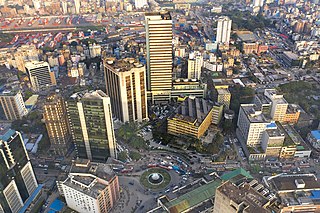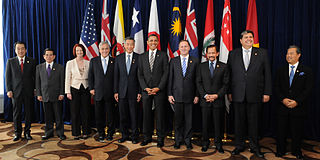History
Establishment

In the late 1800s, foreign imports from British India of cotton yarn had created a large market for weavers in the countryside of Northern China. Foreign interests noticed several key benefits of operating in China, including the vast market, availability of cheap labor and raw materials, longer work hours, and lower transport costs. The first foreign enterprises were established immediately after the Sino-Japanese War of 1904-05, within a few years of the first Chinese factories. Due to the treaty ending the war, foreign entities were able to operate exempt from tariff duties and with fewer political restrictions than native companies. The British came first, but the Japanese arrived soon after. [20]
Rapid Expansion
Since imports of Western manufactured goods stopped during World War I, the cotton industry in both China and Japan developed rapidly to fill the need in Asia. Initially, all of the machines and accessories were imported from Britain or America. This foreshadowed an industry trend of importing technology and exporting finished goods that describes most of the 20th century. [3] However, in the 1920s, Japan became the main supplier of machines, and some began to be built in China as well, establishing the textile-machine-tools industry which would eventually grow enough in volume to supply neighboring countries as well. [21]
Competition with Japanese Companies
While the total capacity of the Chinese mills into the 1930s was greater than that of the Japanese, a third of the cotton yarn and half of the cotton goods produced in China were made by Japanese owned mills. [10] Japanese mills had the advantage of better technology and more capital, while Chinese mills were limited due to management inefficiency, lack of organization, and financial weakness. In particular, the Japanese mills were able to survive the depression in the 1930s because they had stronger and more stable financial backing. [20] Furthermore, in Shandong, which is still industrially important today, the Japanese had the advantage of the significant transportation and utilities infrastructure developed by the Germans when they used the city as a port for trade. When the Japanese arrived in 1914, they were able to use these resources and the local people's knowledge of machinery to very quickly establish seven modern spinning mills. Thanks to the electric power set up by the Germans, they were also able to implement electric powered weaving machines throughout the 1930s to significantly increase the production efficiency of mills. [10]
In 1934, the National Economic Council of China established the Cotton Industry Commission, meant to improve the quality of Chinese raw cotton and to improve spinning, weaving, and dyeing techniques. However, due to the lack of capital and high outstanding debt of the Chinese mills, production costs were still high. In 1936, Chinese mills began to crop up inland instead of on the coast in an attempt to have more competitive costs and prices. The inland mills allowed them to sit closer to raw materials and the rural weaving markets. [20] However, war suddenly broke out and devastated both the Chinese and Japanese textile industries.
Sino-Japanese War
In July 1937, there were some 2.75 million spindles and 25,500 looms under Chinese ownership. There were 2.38 million spindles and 33,800 looms under Japanese control. Plans had been underway by both camps to expand dramatically, but most were stopped by the outbreak of the war. For comparison, the British controlled some 220,000 spindles and 4,000 looms. [20]
When the fighting started, the Chinese Government commissioned a group to help mill owners move their equipment inland. Areas such as Shantung, Honan, and Wuhan were able to move tons of equipment inland before the Japanese arrived, essentially clearing out existing mills and setting up new ones. However, around Shanghai, the fighting started so suddenly that only the equipment inside the International Settlement survived. Approximately 44% of the Chinese mills were located in and around Shanghai, and as a result, 60 Chinese owned mills possessing about 70% of Chinese-run manufacturing equipment were lost. A large number of small weaving and dyeing workshops were also destroyed. When mills were not entirely destroyed, they were either operated by Japanese companies or transformed into hospitals or military headquarters. Most mills around Shanghai were too badly damaged to get fully running again quickly and were simply transformed to military use, but in the North, mills soon resumed work under the Japanese. However, these Japanese controlled mills were constantly harassed by guerrillas or revolting workers. The Japanese were further hindered by the exhaustion of raw materials, scarcity of labor, and marketing difficulties due to nationalistic conflicts. For example, when they evacuated their Qingdao mills for a few months in late 1937, the mills were in ruins when they returned. [20] Soon the Japanese began to offer a system of "cooperative management" to the Chinese mill owners. Under this organization, there would be Japanese management and the Japanese would get 51% of the profits. Meanwhile, all repair costs would be borne by the Chinese. Most owners rejected this system.
The Rong Family's Shenxin Mills
The Rong brothers, Rong Zongjing and Rong Desheng, became the so-called "cotton and flour kings" due to their empire of the ten Shenxin textile mills and sixteen Maoxin and Fuxin flour mills. By the mid-1930s, the Rongs held almost 20% of spindles in Chinese owned textile mills. [22] However, in August 1937, they lost five of their seven Shanghai mills. Two were bombed and taken over by military forces, while the other three fell under Japanese control. The last two surviving mills were in the International Settlement, which was relatively protected from Japanese attacks as a zone of neutrality. While mills were encouraged to move inland and many did, the ones that stayed in Shanghai like the last two Shenxin mills registered as foreign entities for protection. They "leased" their mills to foreign owners and hired fake foreign managers so that they could fly a foreign flag. In fact, since the two mills were actually over capacity before the conflict, they operated more efficiently during this period, and one actually expanded and increased output. [13] Even though the industry had taken a big hit, any mills that were not destroyed enjoyed decent profits due to high demand and low supply. This incentivized industrialists who were still in the area to rebuild mills, and they were able to bring the area back up to 40% of prewar production. [20]
When the Pacific War erupted, the International Settlement came under heavy fire, and British or American registration made factories a target. The Japanese took over the Rongs' remaining two mills on the grounds that they were enemy property. However, since the Chinese were no longer Japan's biggest enemy, the military was ready to restore Chinese mills in Shanghai to industrialists willing to work with the occupation. The Japanese opposed returning the mills that they had restored and maintained, especially without a payment in return for all of the rebuilding they had to do. However, the Chinese manufacturers argued that they could more easily operate in the Chinese market and gain access to cotton produced in rural areas. One industrialist also appealed to a Japanese government connection of his who was a strong advocate for Pan-Asianism, and returning the mills to establish good relations was seen as a symbol of the Pan-Asian movement. In return, the industrialists were required to show public support for the Japanese, and many plant managers joined the control organizations of the puppet government.
However, Japan still controlled a significant amount of the raw cotton in China, so most of the cotton was either shipped to Japan or given to Japanese mills in China. Due to this lack of cotton, several of the Shenxin mills stopped production while others operated at a fraction of their capacity. The Rongs had to turn to the black market to continue profitable operation. They rented out their equipment to smaller rural workshops that could more easily evade control and tax. [13] Ultimately, this willingness to work with and around the political powers of the time allowed the Rongs to survive, as well as the other prominent mill families of the time.
Recovering from War
China's textile industry only became dominated by the Chinese after the defeat of Japan in 1945, which gave China ownership of many well-equipped and efficient manufacturing units. However, Chinese management was limited in technical and managerial skill. Furthermore, because of the deterioration with lack of maintenance of many plants during the war, efficiency in 1947 varied between 65-80% of prewar standards. Combined with the loss of spindles due to the destruction of the war, output was only 40% of 1937 output. [21] After Japan's retreat, the Chinese government took over 40 mills and incorporated them into the Chinese Textile Industries Corporation (CTIC), arguing that government management would get the mills running again most quickly. The government wanted the mills to clothe the army and to produce enough profit to reduce the government budget deficit. It also wanted to organize the mills to take over markets formerly supplied by Japan and to alleviate the clothing shortage in China and thus take over the domestic textile market. Ultimately this resulted in the government controlling 50% of China's textile industry. However, one of the actual reasons these mills were more efficient was because the Japanese had maintained the equipment in their mills well during the war. Yet even with easier access to capital, the government made no moves to expand its mills, indicating a lack of desire to invest but rather a desire to reap profits. [21]
Private mills continued to try to grow, but major obstacles included high production costs due to inflation and scarcity of foreign exchange with which to buy raw cotton, machinery, and supplies. The war had wreaked havoc on the land, and the textile machine tool industry which had been prospering was largely lost. Finally, as the Chinese Communist Party rose to power, many mill owners packed their bags and moved their operations to Hong Kong to survive, allowing the next stage of development to take place in Hong Kong.
Reform and Opening Up
During China's Reform and Opening Up, it abolished its Ministry of the Textile Industry in light of the sector's opening to market activity. [23] : 64 The Ministry was replaced by a non-governmental association, the Association of the Textile Industry. [23] : 64 The Association is typically headed by a retired deputy minister from the Ministry of Industry and Information Technology. [23] : 64











